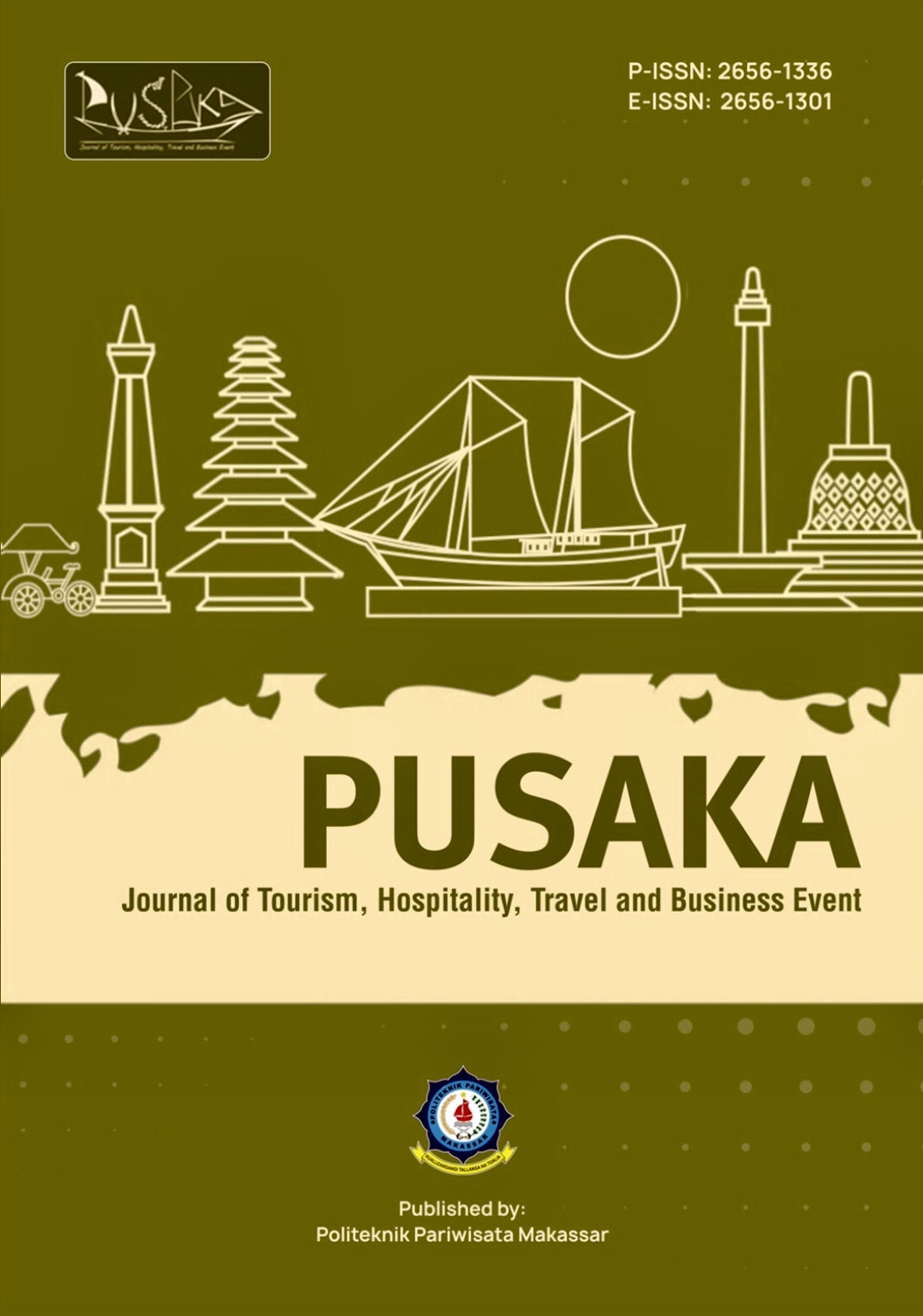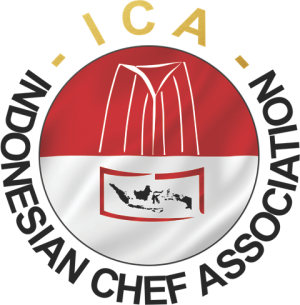Strategi Pengembangan Potensi Wisata Desa Bissoloro
DOI:
https://doi.org/10.33649/pusaka.v1i1.9Keywords:
Development, Potency, EcotourismAbstract
This research aims at identifying the strategy in developing bissoloro village. A qualitatively driven SWOT method has guided the researchers in identifying the Strength and Weakness. This research was conducted in Gowa regency in Bissoloro village from April to September 2018. The research reveals that the government, community and the villagers itself must have cooperation or agreement such Memorandum of Understanding to put the vision and mission become virtual. Tourism training and assistance seems to be problem-solving in order Bissoloro become famous tourist destinations. This research recommends the improvements of knowledge, awarness, and remembering not only limited to Regional Boards of Tourism in Gowa Regency, Community but also to the every residents of Gowa Regency and especially Bissoloro village too, so the visitors wil gain an amazing experience in Bissoloro village. An Understanding and collaboration among others in order to improve the promotion strategies especially with Tourism Institution such Tourism Polytechnic of Makassar
References
Astuti MT. (2008). Model Kemitraan dalam Mengembangkan Usaha Pariwisata. Journal Kepariwisataan Indonesia, Kementerian Kebudayaan dan Pariwisata. 3 (1): 89-99. Jakarta
Baiquni, M. (2002).“Integrasi Ekonomi dan Ekologi: Dari Mimpi Menjadi Aksi” dalam Jurnal Wacana Edisi 12 tahun 2002, Yogykarta: Insist Press.
Bando, Arifin. (2017). Sulawesi Selatan Ikut Kembangkan Desa Wisata. http://www.republika.co.id diakses 2 Januaari 2018
Becker, Egon, & T. Jahn (eds.). (1999).Sustain-ability and The Social Sciences. New York: UNESCOdan ESOI
Damanik, Janianton dan Weber, Helmut. (2006). Perencanaan Ekowisata Dari Teori ke Aplikasi. Yogyakarta: PUSPAR UGM dan Andi.
Fernando, Nimal A. (2008). Rural Development Outcomes and Drivers: An Overview and Some Lessons. Phillipines: Asian Development Bank.
Godfrey, K. & Clarke, J. (2000).The tourism development handbook. New York: Martins the
Printers Ltd Hausler,N, Strasdas,W. (2003). Training Manual forCommunity Based Tourism. Zschortau: Inwent.
Kountur, Ronny.2003. Metode Penelitian Untuk Penulisan Skripsi danTesis. Jakarta:PPM
Mason, Peter. (2003). Tourism Impact, Planning, and Management. Oxford: Butterworth-Heinemann
Miles, Matthew B. Huberman, A Michael.1992. Analisis Data Kualitatif:Buku Sumber Tentang
metode-Metode Baru. Jakarta:Universitas Indonesia.
Pramanik., P., D and R Ingkadijaya. (2017). 1st UPI International Geography Seminar 2017. IOP Publishing IOP Conf. Series: Earth and Environmental Science 145 (2018) 012060 doi
:10.1088/1755-1315/145/1/012060
Rangkuti. (2014). Teknik Membedah Kasus Analisis SWOT. Jakarta: PT. Gramedia Pustaka Utama.
Ratman D, Rizki.(2017). Kemenpar Beri Penghargaan Bagi Homestay di Indonesia.http://www.cnnindonesia.com. diakses 10 Februari 2018.
Rencana Strategis (RENSTRA) Dinas Kebudayaan dan Pariwisata Kabupaten Gowa 2006-2010.
Sulistyo-Basuki (2006). Metode Penelitian. Jakarta: Wedatama Widya Sastra bekerjasama dengan FIBUniversitas Indonesia
Sharpley, Richard. (2000). Tourism and Sustainable Development: Exploring the Theoretical Divice .Journal Of Sustainable Tourism, VIII (1).
Suansri, Potjana. (2003). Community Based Tourism Handbook. Thailand: REST Project.
Sugiyono. (2008). Metode penelitian Kuantitatif Kualitatif dan R & D. Bandung: Alfabeta.
Suyono. (2009). Homestay di Waduk Kedung Ombo Sragen Penekanan Arsitektur Lokal. Surakarta: Universitas Muhammadiyah Surakarta.
Tasci, Asli D.A, Semrad, Kelly J and Yilmaz, Semih., (2013). Community Based Tourism Finding The Equiblirium in COMCE Context, Setting the pathway for the future. Ankara: COMCE Coordination Office.
Downloads
Published
How to Cite
Issue
Section
License

This work is licensed under a Creative Commons Attribution-ShareAlike 4.0 International License.






















